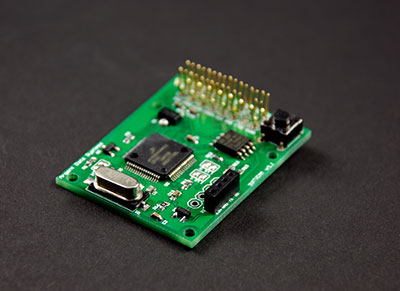Whether manufacturing or repairing, you have come across the 2N5088 Transistor in the electronics world. The Transistor works best as an amplifier for low noise to high gain signals.
Alternatively, the 2N5088 Transistor can also function as a switch. It is capable of conveniently handling drive loads of 100mA at normalcy and up to drive loads of 200mA when at peak.
So, if you can at least identify the 2N5088 Transistor, this article will offer you an in-depth review of the Transistor and teach you when and how to use it.
Contents
2N5088 Transistor Features
Below are some identifiable features that should accompany any 2N5088 transistor datasheet.
- It is an NPN (negative- positive-negative) transistor
- It is a TO-92 package transistor
- Has a maximum Collector Current(IC) of 100mA but also handles drive loads of up to 200mA
- The VCB (30 V collector-base Voltage)
- It also has a VEBO Max Emitter-Base Voltage of 5V
- The VCE (Maximum Collector-Emitter Voltage) of this Transistor is 30 Volts
- It also bears a Pc (Power Dissipation/collector) of 625 milliwatt
- Finally, it has a maximum of its FT (Transition Frequency) at 50 MHz
2N5088 Transistor pin Configuration
The 2N5088 Transistor is a typical TO-92 package transistor, and like all other transistors, has three transistor pinout terminals. The pin configuration of this Transistor can be easily described in the table below.
| Pin No. | Name | Description |
| 1 | Emitter Pin | The plug through which currently drains out |
| 2 | Base Pin | Controls biasing of the Transistor in that it controls the turning On/Off |
| 3 | Collector pin | This pin controls the flow of current gain through the Transistor. |
Special Offer: Get $100 off your order!
Email [email protected] to get started!
2N5088 Equivalent Transistor
You might encounter some damages to your Transistor and might need to replace it. One of the most common replacement transistors is the 2N2222 Transistor. Below is a list of 2N5088 transistor substitutes that could be used in place of this product type.
2N5089, MPS650, ZTX692/4/6, S9014, BC108, KSP05, KTC9014, 2N3904, 2N4401, 2N5210, 2N222, MPS650/1, MPS6602, MPSA18

(Substitutable transistors that could replace the 2N5088 Transistor)
How do we use the 2N5088 Transistor?
As we had highlighted before, the Transistor has two significant uses; an amplifier and a switch. The Transistor is designed with again feature to amplify low noises and gain adequate audible noises with different noise cutoffs. It can also perform as a separate amplifier of distinct audio circuits at the output, driving the course into 2” to 3” speakers.
As an amplifier, it can be used in the following ways
- Audio preamplifiers
- Microphone amplifiers
- General audio equipment and amplifiers in low noise stages

(A typical amplifier that uses the 2N5088 Transistor
As a switch, the 2N5088 Transistor is usable in the following ways;
- Sensor circuits
- Load switching of 100mA to a max of 200mA
- Used to create NPN Darlington Transistor
How the 2N5088 Transistor Works
To properly function as either a switch or an amplifier, there are certain things the Transistor might do. So, the Base-emitter pin must have a Base-Emitter voltage capacity of 3 to 5 volts capacity. It thereby enables it to adequately supply this amount of current to induce the base’s draft into the Transistor. Once the wind is through, the Transistor will then automatically forward biased, and so in return, the connection between the emitter and collector will be closed.
In short, when you induce voltage at the base terminals, the Transistor gains current. That gained current in return can control larger currents at the emitter and collector pins.
The usability of the Transistor as an amplifier is achievable by the base terminals controlling the number of electron flow. So, when appropriately manipulated, you can easily switch low noises to perfectly audible noises.

(Audio transistors and other components)
How to Extend the Lifetime of the Transistor
Most transistors might have a shortened lifespan when not adequately used. To extend the life of the 2N5088 Transistor as a switch or amplifier, you need to stick to the following checklist.
- No more than 100mA in continuous or more than 200mA in peak
- No more than 30 Volts
- Ensure that you maintain an ambient temperature of at least -55°C Maximum Operating Temperature and below +150 centigrade
Summary
As we end, there are essential things that you should take away from this article. The 2N5088 Transistors, like most other transistors, works as an amplifier or a switch. We hope that you clearly understand the basics of the 2N5088 Transistor, the use cases, and the replacement options available for electronics enthusiasts.
In case of any other queries with this product type or any other transistor and electronic components at large, feel free to reach us at any time. We are always eager to help.
Special Offer: Get $100 off your order!
Email [email protected] to get started!







